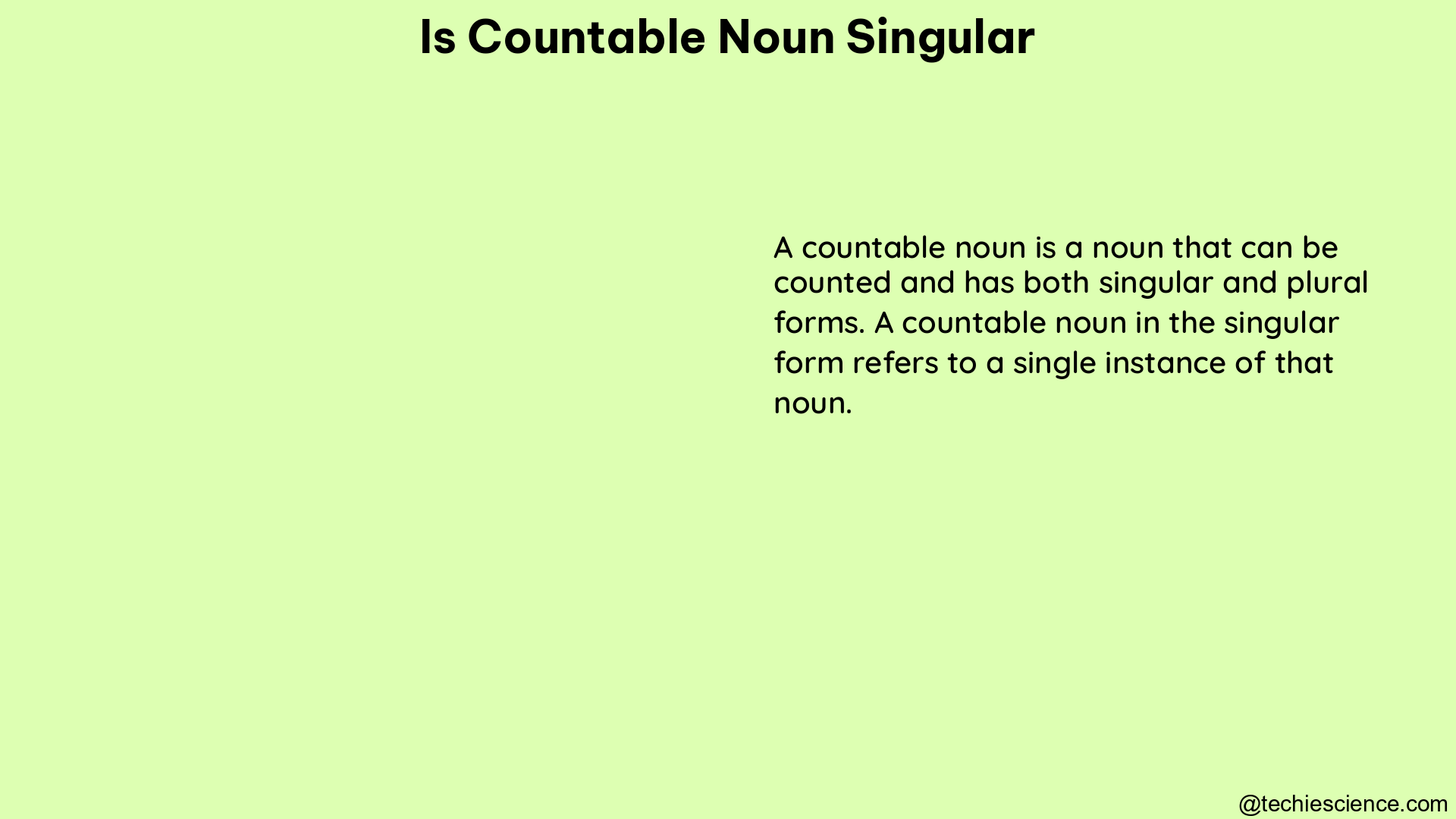Yes, a countable noun can be singular. Countable nouns are nouns that can be counted and have both singular and plural forms. In the singular form, they can be used with the indefinite articles “a” or “an” and with quantifiers such as “one,” “each,” and “every.”
Understanding Countable Nouns
Countable nouns are nouns that can be counted, and they have both singular and plural forms. These nouns can be used with the indefinite articles “a” or “an” and with quantifiers such as “one,” “each,” and “every.” For example:
- A dog
- A house
- A book
The plural forms of these nouns are created by adding “-s” or “-es” to the singular form:
- Dogs
- Houses
- Books
Uncountable Nouns

In contrast, uncountable nouns do not have plural forms and are always considered singular. They cannot be counted and are often used with quantifiers such as “some,” “any,” “much,” and “little.” Examples of uncountable nouns include:
- Water
- Air
- Rice
- Information
- Hair
Nouns with Both Countable and Uncountable Forms
Some nouns can be both countable and uncountable depending on the context. For example:
- “Light” can be countable (a light) or uncountable (light in the room).
- “Hair” can be countable (a hair) or uncountable (hair on the head).
Grammatical Specifications
- Countable Nouns:
- Have both singular and plural forms.
-
Can be used with articles “a” and “an” and with quantifiers such as “one,” “each,” and “every.”
-
Uncountable Nouns:
- Are always singular and do not have plural forms.
- Are used with quantifiers such as “some,” “any,” “much,” and “little.”
Theoretical Explanation
The distinction between countable and uncountable nouns is crucial in English grammar because it affects the usage of articles, quantifiers, and verb forms. Countable nouns can be counted and have both singular and plural forms, while uncountable nouns cannot be counted and are always singular. Understanding this distinction is essential for accurate and effective communication in English.
Examples
- Singular Countable Noun:
-
She has a dog.
-
Plural Countable Noun:
-
There are two dogs.
-
Singular Uncountable Noun:
-
I like water.
-
Quantifier with Uncountable Noun:
- There is a lot of water.
Practical Applications
Mastering the distinction between countable and uncountable nouns is crucial for English language learners. It helps them:
- Use articles and quantifiers correctly.
- Understand and produce grammatically correct sentences.
- Communicate more effectively in various contexts, such as academic writing, business communication, and everyday conversations.
Conclusion
In summary, yes, a countable noun can be singular. Countable nouns have both singular and plural forms and can be used with articles “a” and “an” and with quantifiers such as “one,” “each,” and “every.” Understanding the difference between countable and uncountable nouns is essential for accurate and effective communication in English.
Reference:
- https://www.languagecouncils.sg/goodenglish/resources/grammar-rules/countable-and-uncountable-noun
- https://academicguides.waldenu.edu/writingcenter/grammar/nouns
- https://www.grammarly.com/blog/countable-and-uncountable-nouns/
Hey! I am Arpita Bose Roy. My qualifications are M.A. in English with B. Ed. in both general education and special education. I have 2 years of experience as a “language analyst” at IIT Kharagpur and 4 years of experience as an “Academic Content Developer” at IIT Kharagpur. Currently, I am working as an academic writer at Lambdageeks.